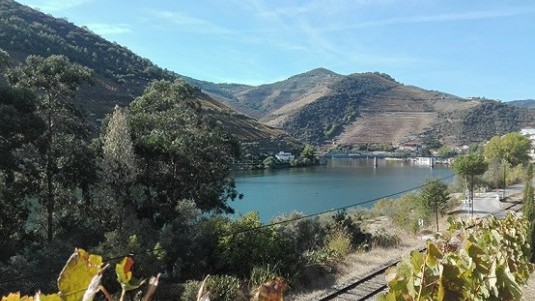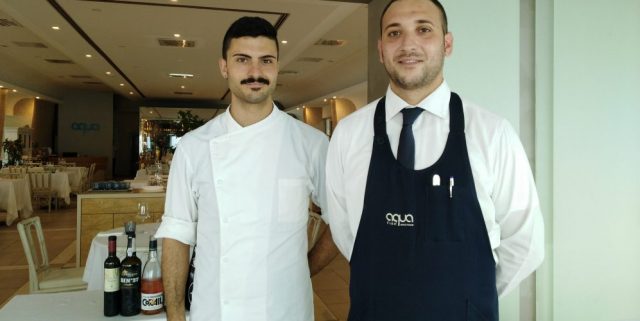Port is not just Porto

Porto is a city known for its fortified wine but Port is actually the product of three different places.
Porto is a European city that few know to the extent that often when you say you’re going there people will say: “You mean Port-tugal and you’re going to Lisbon”. Those who do know it do not agree on whether its real name is Porto or Oporto, the latter being a crasis with the article ‘o’ in Spanish. And when it finally sinks in where you are going people usually say: “Ah, going there to do a little drinking, then”. This is because Porto is better known for the drink and not the city. Only a minority of people know that Porto is a city where you can buy a cup of coffee for 60 euros cents and it is always good, where a 20cl ‘fino’ of Super Bock beer costs one euro and a bowl of soup is 1.50 euros. What’s more, it is a city where you can have lunch for four euros and dinner for eight euros, even having some excellent Atlantic fish.
Porto is also a city where university students still go around night and day in uniforms complete with black capes, just like Hogwarts . In fact, the author of the Harry Potter books, J.K. Rowling, was living in Porto when she began writing the first book and found inspiration for it from places like the Livraria Lello & Irmão on which the Flourish and Blotts bookshop is based. Porto is a city where transportation services work perfectly (which is normal almost anywhere but Rome), a place where you can find Baroque churches and slums existing together and while there may be a lot of poverty, there is never a shortage of good humor and dignity. But above all it is a city where from Ribeira , the historic neighborhood along the Douro River that is a UNESCO Heritage Site, you can imagine the ancient port city bustling with activity and full of sailors unloading barrels and rolling them off the docks. Like many port cities, Porto opens its arms to you but without being intrusive, which observes you without judging you, just like the people who live there who are always courteous and obliging yet extremely discreet.
Although everyone knows Porto for its fortified wine, it is not made there but in another city that lies across the Douro River: Vila Nova de Gaia . The two cities are united by a double-deck, arch steel bridge, Dom Luiz I, which was designed by Théophile Seyrig, a disciple of Gustave Eiffel, and inaugurated on October 31, 1886. The reason why Port is made in Vila Nova de Gaia is that due to the curve in the river it is directly exposed to breezes from the Atlantic Ocean, which is a dozen or so kilometers away, which create the ideal conditions to age the wine in regard to ventilation and humidity. The grapes for the wine, on the other hand, are from the Douro Valley , an internal region in the northern corner of Portugal where steep hills run down to the banks of Douro River. Here the unique combination of climate, soil and varietals has created perfect conditions for sparing yet top quality winegrowing that has been practiced there for over 2,000 years. If you do not have the time to take a several-day cruise up the river, take the train to Pinhão that runs alongside the river and gives you an excellent view of this incredible panorama, a mixture of nature and man’s intervention that has also justly been recognized as a UNESCO Heritage Site.
The hills are quite steep and winegrowing is exclusively done by hand and many estates (including Taylor’s that we will deal with in another article) still obtain the juice by stepping on the grapes in granite lager vats. This is a tiring yet well-disciplined ritual that only appears festive but ensures the best must possible for the top Port wines, especially Vintage Port. The fermentation of the must is blocked after 48-72 hours with the addition of 20% aguardente (distilled wine) and the wine matures in vats in the Douro Valley until the following spring, when it travels to Vila Nova de Gaia to complete the aging process. The wine used to be transported there by river on the barcos rabelos, typical Portuguese boats, but these have been replaced by the less romantic but more functional cistern vessels. When the wine reaches its destination it is transferred into centuries old wood vats that sit on a gravel floor in enormous and humid street-level storerooms where the temperature is ‘controlled’ by the windows in the ceiling. Here each wine takes the direction it is pre-destined for and determined by the type of aging it will undergo (in reduction, in the bottle or oxidized in wood barrels). Smaller barrels, pipas (up to 630l), are used for wine that will become a Tawny Port or the rare Colheita; large vats (over 20,000l) are used for Ruby, White, Rosé and Late Bottled Port; while underground cellars, rigorously kept under lock and key, are used to age the bottled Vintage and Single Quinta Vintage Ports.
The last stage in the wine’s life takes place across the river in the city that gave it its name, Porto , where it is a draw for tourists and is served in the many cafes and bars that illuminate Ribeira. However, thanks to Portugal’s historic maritime trade, over the past 300 years this fortified wine has reached even the most distant European cities and beyond. Port is thus the child of three different places: the Douro Valley that produces the grapes and weans the wine; Vila Nova de Gaia that gives it a strict education and brings it to maturity; and, finally, Porto , from where, like a kind yet very proper uncle, it is taken around the world. This is a wine that has maintained the charm and flavor of an ancient, rigorous and perhaps old-fashioned tradition but that, like its many faces, has nevertheless demonstrated how it can age well, sometimes very well.

 Italiano
Italiano








